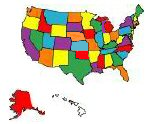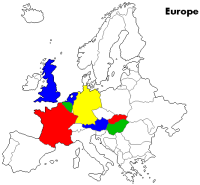All Planes, all the time . . .
We headed out on our Dayton daytrip about 9:30, but our first stop was at the McDonald’s in Harrison, right inside the Ohio line. And after a quick breakfast we were back on the road for the rest of our 85 mile trip.
Our first stop was the Dayton Aviation Heritage National Historical Park, located in and around buildings that housed the Wright Brothers and their businesses.
Most people know about their bicycle shop, but less well-known is the fact they were also in the printing business, printing newspapers, flyers, pamphlets, and other items. And in addition to running two companies, they were also designing the first airplane at the same time.
As their businesses expanded, they moved to bigger buildings but always in this same small area of Dayton.
One of the first things you see inside the Museum is a replica of the Wright’s 1902 Flyer, the first successful powered heavier-than-air craft.
dasdfsdf
While we were there we also saw this replica of the Wright’s Bicycle Shop, where they repaired bicycles and built new ones.
Although Jan and I enjoyed here, we both agreed that we liked the Wright Brother’s museum at Kitty Hawk, NC.
Next we headed about 10 miles away to visit The National Museum of the United States Air Force.
 Like visiting the Smithsonian Air and Space Museum, it’s hard to know where to start. They had pretty much one of everything, including some that I’ve never seen in person before.
Like visiting the Smithsonian Air and Space Museum, it’s hard to know where to start. They had pretty much one of everything, including some that I’ve never seen in person before.
There are planes everywhere you look, in front, behind, overhead, etc.
From the Red Baron’s Fokker Triplane,
dasdfsdf
to the Kettering ‘Bug’, essentially a 1917 version of the cruise missile.
dasdfsdf
And this Kellett K3 Autogyro.
dasdfsdf
This is the last remaining Seversky P-35, the forerunner to the P-47. It was the Army Air Corps first production, singe-seat, all-metal pursuit plane with retractable landing gear and an enclosed cockpit.
It also has the unique property of being the only plane flown by both the U.S. and the Japanese during World War II. The Japanese government bought 20 of these from the US in 1938 and used them through the war.
dasdfsdf
I can only figure that the pilot of this B-24 Liberator either married a redhead, or got a ‘Dear John’ letter from one.
dasdfsdf
This is the ME 163B Komet, a WWII German rocket-powered interceptor designed to climb rapidly and bring down the Allied bomber formations. It was hampered by its short range and vulnerability to being shot down while landing.
dasdfsdf
The is the ME 262A, the first jet aircraft used in combat.
dasdfsdf
This is the P-61C Black Widow night fighter, the first US plane designed specially for that purpose. The radar in its nose allowed to track and shoot down enemy aircraft in total darkness.
dasdfsdf
This is one that I’ve never seen in person before. It’s the F-82G Twin Mustang, similar to the P-38 Lightning, in that it has two fuselages joined by a common wing. It was the last propeller-driven fighter aircraft acquired by US.
dasdfsdf
And this is the B-29 ‘Bockscar, only the second plane to drop an atomic bomb in wartime, in this case, on Nagasaki, Japan.
dasdfsdf
And this is a replica of the ‘Fat Man’ bomb that was dropped. It derives its explosive power from the plutonium, unlike the ‘Little Boy’ bomb that was dropped on Hiroshima three days earlier, that was powered by Uranium 235.
dasdfsdf
We’ve now seen both WWII atomic bombers, this one, along with the ‘Enola Gay’ at the Smithsonian in Washington, D.C.
This wraps up today’s blog. I’ll continue our tour in tomorrow’s post.
——————————————————————————————————————–
Thought for the Day:
There are no stupid questions, but there sure are a lot of inquisitive idiots.
dasdfsdf






















